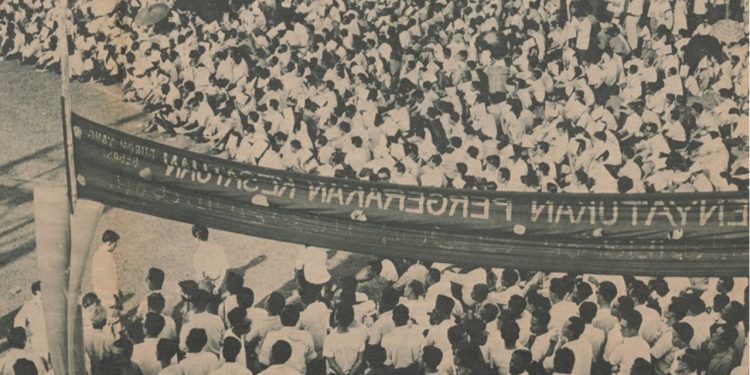Photo credit: The Singaporean
Yet another public holiday is coming our way and we are all set to make the most of the break. But what are we celebrating? Among the public holidays, Labour Day may most probably be the least understood.
Ironically, when it first took place on 1 May 1886, it was not much of a celebration. Workers in the United States were battling against long work days of up to 16 hours.
Reportedly, more than 300,000 workers in 13,000 businesses were on strike, prompting more to follow suit in the subsequent days. The call for an eight-hour work day was eventually accepted, but it was not before lots of casualties resulted from the conflict with the authorities.
To commemorate those who fought to better the lives of the workers and made sacrifices in the process, Labour Day was established. Today, it also goes by other names – Workers’ Day in some countries and popularly known as May Day in Singapore.
Roots from a Worker-First Singapore
Rather than a day for protest, May Day is a call for celebration in Singapore.
It all started when the People’s Action Party (PAP) promised during elections that a Government run by the party is one on the side of the workers.
Almost a year after PAP assumed office, the first May Day Rally was organised on 1 May 1960. In his speech, then-Prime Minister Lee Kuan Yew said:
“The apparatus of the State is now in the hands of the representatives of the people, the majority of whom are workers. So all the old frustrations, the indifference of non-cooperation of the administration, the advantage taken of this negative attitude by die-hard employers, the refusal of recognition, the rejection of negotiations, all these are gone.”
Remembering Hard-Earned Triumphs
It wasn’t always this peaceful. We fought a tough fight to get to where we are today.
“Today is May Day, the day when we remember our own struggles that led to past achievements and also remember the leaders who guided us in our times of great need.”
– National Trades Union Congress (NTUC) Secretary-General Steve Nayagan in May 1966 issue of Perjuangan
In 1960s, we were fending off communism, quelling racial tensions and fighting for independence.
“May Day this year sees the beginning of a new stage in the life of our Republic, a stage in which problems of great magnitude loom ahead following the British Government’s decision to withdraw its armed forces completely from Singapore by 1971. The next few years will test the mettle of our people, their determination and ingenuity in meeting and resolving problems arising out of British withdrawal and changes taking place in South-East Asia.”
– Labour Minister S. Rajaratnam in NTUC May Day Souvenir Magazine 1968
Amid global economic difficulties such as oil price hikes and hyperinflation in advanced countries in the 1970s, we waged a war against low wages.
“May Day 1972 marks an end, and a beginning. It marks the end, for Labour in Singapore, of the years of wage restraint and, in many cases, of wage freeze. It also marks the beginning of the pay-off for the effort, discipline and restraint of the last few years.”
– NTUC Secretary-General C.V Devan Nair’s May Day Message
Even so, we were never stagnant. In 1980s, we embarked on a long and arduous productivity drive, which continues till today.
“[May Day 1980] marks the beginning of a national effort to transform our labour intensive economy into one where middle-technology industries and a high-skilled labour force are the orders of the day. The changes that will accompany this economic restructuring will provide all Singapore workers opportunities to uplift themselves to still greater heights in their earning capacity, skills and self-development.”
– NTUC Secretary-General Lim Chee Onn’s May Day message
Against all odds, Singaporeans’ average earnings had increased more than three times from 1964 to 1989.
Reminders of Challenges Ahead
As much as May Day is about recognising past achievements, it is also about planning for the future.
Labour leaders over the years have made use of the occasion to take stock of how the workforce stacks up against global benchmarks, present challenges and emerging opportunities. Laying down goals and strategies, they make sure workers are well-positioned for the year ahead.
Late Mr Lee says it best here:
“It is not often that we get an opportunity as today to remind ourselves of the bigger problems around us, not just getting unions, together, getting more wages or better conditions of living, but more important, ensuring our future. Because if the future is gone, all your agreements, all your fringe benefits, all your wages, if the economic stability is not there, economic development is not there, because the political stability is not there, then all is lost.”
After hearing all these stories, there are reasons why May Day is more than just a break from work – the Singapore experience is born out of working people’s past struggles back in the 60s to workplaces today that incorporate and celebrate modern-day practices and concern for workers.

